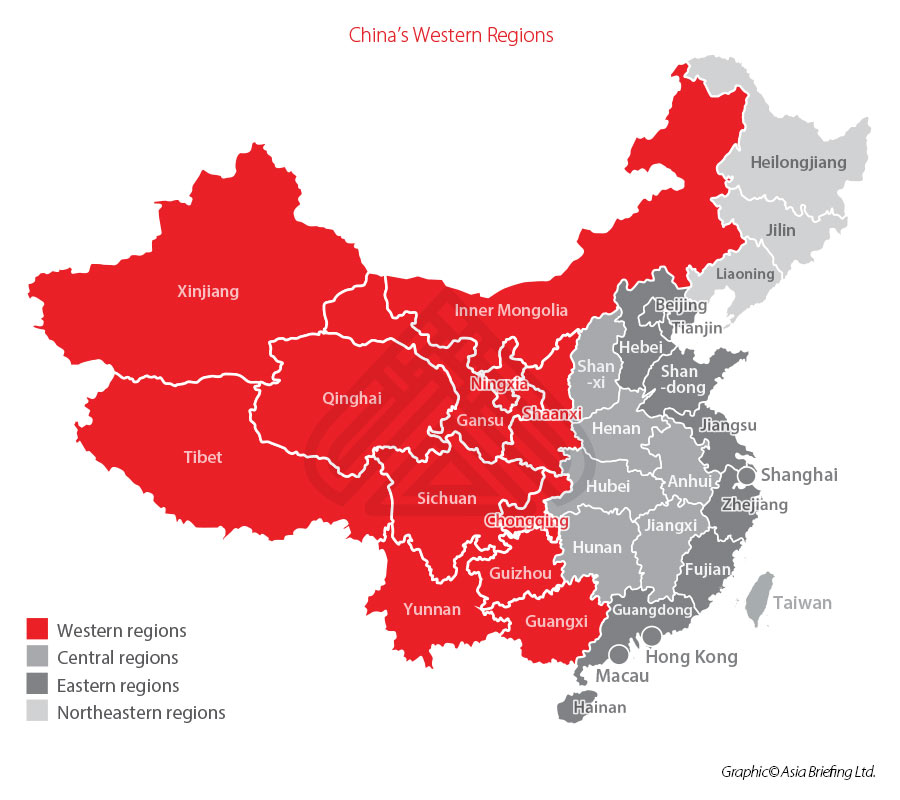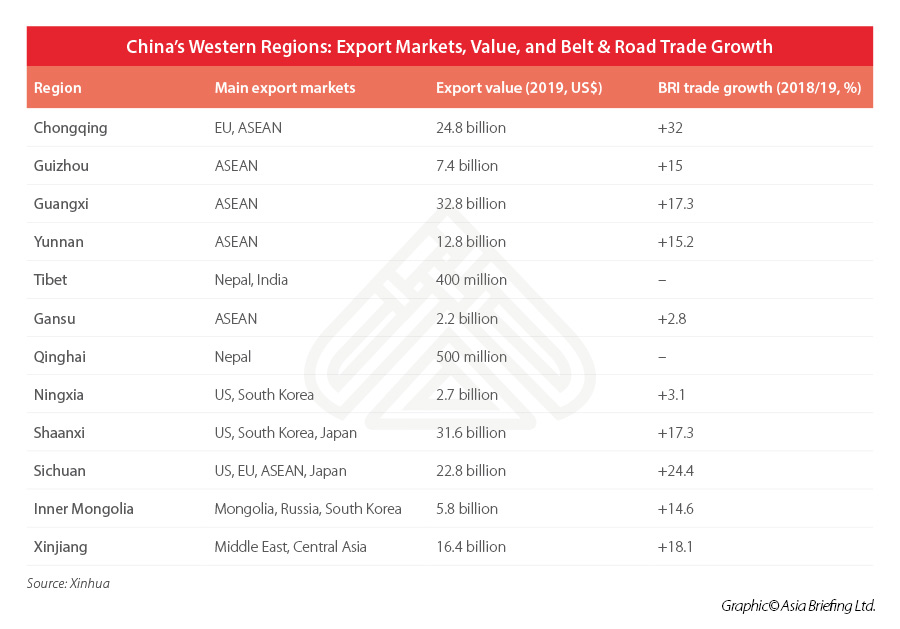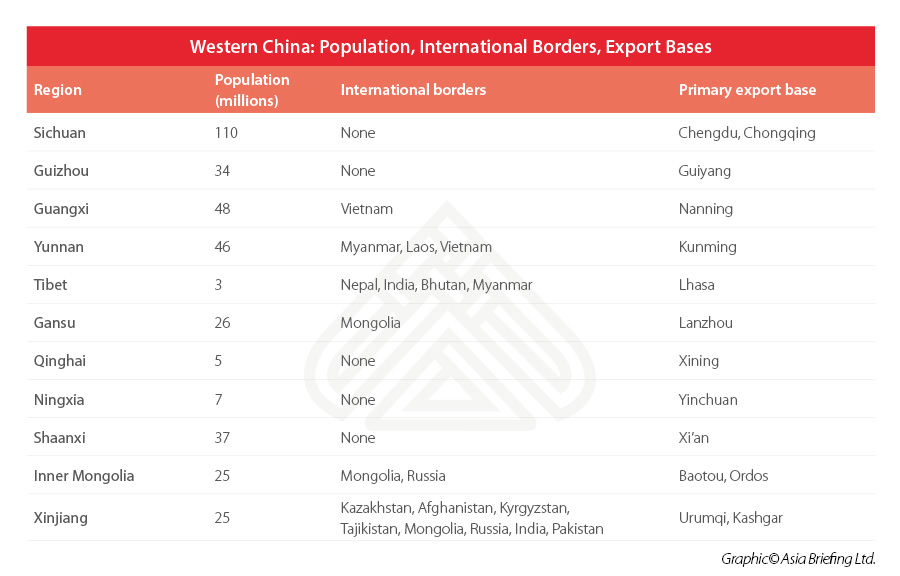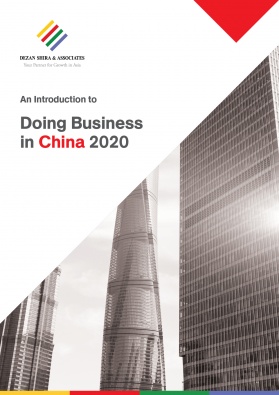China Extends 15% Profits Tax to Qualifying Investors in its Western Regions
Move makes Guangxi and Yunnan competitive with Vietnam manufacturing costs.
Op/Ed by Chris Devonshire-Ellis
China’s State Council has decided to extend preferential corporate income tax (CIT) policies to further enhance the massive development of the Western Regions. Following an executive meeting on April 14 this year, China’s Ministry of Finance and the State Taxation Administration has subsequently released the Announcement about Continuing to Implement Preferential Corporate Income Tax Policies for Western Development.
Profits tax reduction for investing in China’s Western Regions
According to the announcement, enterprises will pay a lower CIT rate of 15 percent – if they make investments in encouraged industries in China’s Western Regions from January 1, 2021 to December 31, 2030. This includes foreign invested companies. China’s standard corporate income tax rate is 25 percent. CIT in Vietnam is 20 percent. The announcement is an extension of incentives as previously, encouraged enterprises in the Western Regions were eligible for a reduced preferential CIT rate of 15 percent between January 1, 2011 to December 31, 2020. China’s Western Regions include Chongqing Municipality, Sichuan, Guizhou, Guangxi, Yunnan, Tibet, Gansu, Qinghai, Ningxia, Shaanxi, Inner Mongolia, and Xinjiang, while some regions and cities in other provinces, such as Xiangxi, Enshi, Yanbian, and Ganzhou can also adopt the same preferential tax policies. To qualify, investors must fit into categories as provided for in the ‘Catalogue of Industries Encouraged to Develop in the Western Region’. The announcement is effective from January 1, 2021 – giving foreign and potential foreign investors in China eight months to conduct market research prior to committing to an investment.
The Western Regions’ Encouraged Industries List
Encouraged industries are listed in the Catalogue of Industries Encouraged to Develop in the Western Region, and in order to enjoy the preferential tax rate, a company’s main business revenue must account for at least 60 percent of its total business revenue. This will apply in most cases but is in place to prevent deliberate exploitation of the preferential reduction by domestic companies. The Encouraged Industries List varies from region to region, with about 30 different industries listed for each. In previous, similar lists, these have been typically demanding with highly specialist requirements. What is unusual about the latest list for the Western Region is that it appears to include fairly standard foreign investment criteria. The Yunnan list, for example, appears to accept as qualifying for the scheme, standard investments in items, such as water soluble fertilizers; manufacturing of power generation, transmission, transformation, supply, distribution and control equipment; small and medium-sized hydropower equipment; manufacturing of applicable pharmaceutical and biological equipment; manufacturing of modern agricultural machinery suite for plateau mountain areas, such as tractors, cultivators, mini-tillers and rice, corn, potato and cane harvesters; manufacturing of automobiles, and special purpose vehicles; intensive processing of cane sugar, construction and operation of water supply projects for rural residents (including the extension of urban water supply facilities to rural areas); highway passenger transportation; operation of civil airports (production and operating activities in connection with airport operation; R&D and application of cloud computing solutions; Broadband network construction and operation, construction and operation of port logistics facilities (warehouses, storage yards, loading, unloading and handling tools, multimodal transport and transfer facilities and the logistics information platform); small loan financial services for agriculture, rural areas and farmers, small and micro enterprises, and individual businesses; training of arts and skills (music, performing arts, painting, design, jewel and jade authentication and traditional handicraft); the operation of medical institutions; the development and application of rural domestic sewage, rubbish, and livestock manure. It is a wide range.
To allow further initial research, we have provided a complimentary English language, PDF copy of the Catalogue of Industries Encouraged to Develop in the Western Region for our China Briefing readers. This catalogue is applicable for both domestic and foreign firms.
In addition to this, we also provide another English language PDF copy of a Catalogue that specifically targets foreign investors in China, the Catalogue of Industries Encouraged for Foreign Investment in Central and Western Region.
(To ensure you receive notice of similar updates, please obtain a complimentary subscription here). 
China’s Western Regions: Export markets, value, and Belt & Road trade growth
The reduction in profits tax is especially relevant for foreign investors looking to develop export markets from these regions in China. Data as follows: 
In overall terms, China’s trade with the Belt & Road countries rose 9.9 percent in 2019, accounting for 29.3 percent of the total national import and export trade volume.
Western China: Geographical demographics
In terms of reaching export markets, these can essentially be broken down as follows in terms of regional proximity and the possession of committed, existing supply chain infrastructure, including ports, warehousing, and customs facilities. It should be noted that parts of China’s western regions also have significant consumer bases.
Western China: Existing 2020 and upcoming free trade agreements
In terms of tax and free trade, the most obvious candidates for foreign investors to explore with the Western Regions Catalogue of Encouraged Industries and the applicable reduced 15 percent profits tax rates are as follows:
China-ASEAN
The Western Regions of Yunnan, Guangxi, and Tibet all share borders with the ASEAN nations of Laos, Myanmar, and Vietnam, of which the latter is the easiest to access. ASEAN also includes Brunei, Cambodia, Indonesia, Malaysia, Philippines, Singapore, and Thailand and is a free trade bloc in its own right, allowing for free movement of trade throughout the region. This is significant as China has a free trade agreement (FTA) with ASEAN. This means that products shipped from China to these regions attract reduced or zero duties when landing in ASEAN. This, in turn, means attacking these export markets may best be done from a base in western China, with Yunnan and Guangxi being the easiest choices to do so.
China-EAEU
China’s Western Regions of Xinjiang and Inner Mongolia share borders with Kazakhstan, Kyrgyzstan, and Russia. These countries are part of the Eurasian Economic Union (EAEU), which has signed off an FTA with China. At present, trade attachés on all sides are negotiating tariff reductions and exemptions. These are not in place as yet, but when they are, we will see a significant increase in trade. The date that China has set for the implementation of the Encouraged Industries Catalogue for the Western Regions may be a pointer. Typically, China introduces these with immediate effect; however, on this occasion it has unusually elected to delay this until January 1, 2021. It is possible that China and the EAEU expect to announce the tariff details as part of the FTA at a date near to this.
How to apply for profits tax reductions, encouraged industry qualification
The first stage is to engage advisors who can determine the following:
- Does your proposed business activity fulfill the criteria laid down in the Western Regions Encouraged Industries List? This will require liaison with the relevant regional authorities and potentially some negotiation over your permissible and qualifying scope of business. It will be a Yes or No answer.
If positive, this can be followed by:
- Some investors may require additional export market research.
- Legal and tax registration procedures to obtain preferential treatment and tax breaks.
- Assistance with sourcing local customs officials familiar with regional export processes and facilities
- All other business registration, tax, and operational requirements.
- Match the China business end with ASEAN/EAEU distributors and related contacts.
Qualified assistance in western China, and the ASEAN and Russia supply chains
Our firm, Dezan Shira & Associates, has been operational in China since 1992 and has handled multiple foreign investments into western China over the years. The practice published a Business Guide to West China in 2008, and remains familiar with the procedures, regional nuances, and applicable government and official contacts. We also have offices in Vietnam, Singapore, and elsewhere in ASEAN as well as Russia and can therefore assist at both ends of the manufacturing supply chain. Please email us at china@dezshira.com for inquiries on how to proceed with market intelligence and obtaining qualification approval for obtaining profits tax reductions related to investments in China’s Western Regions, and advisory over how to take advantage of this. This article originally appeared as “15% Profits Tax Rates and Preferential Policies for Foreign Investors in China to Support the Belt & Road Initiative” on Silk Road Briefing on May 1.
Related Reading
- Yunnan Investment Profile: Industry, Economics, and Support Policies for Businesses
- A New Perspective: How do ASEAN Economies Stand Against China’s Regions?
- Yunnan and Guangxi Launch Financial Reform Pilot Zone Targeting ASEAN and South Asia
About Us China Briefing is written and produced by Dezan Shira & Associates. The practice assists foreign investors into China and has done since 1992 through offices in Beijing, Tianjin, Dalian, Qingdao, Shanghai, Hangzhou, Ningbo, Suzhou, Guangzhou, Dongguan, Zhongshan, Shenzhen, and Hong Kong. Please contact the firm for assistance in China at china@dezshira.com. We also maintain offices assisting foreign investors in Vietnam, Indonesia, Singapore, The Philippines, Malaysia, and Thailand in addition to our practices in India and Russia and our trade research facilities along the Belt & Road Initiative.
- Previous Article Why China Could Lead the Global Economic Recovery After COVID-19
- Next Article Securing Your China Remote Work Strategy Against Internet Vulnerabilities





